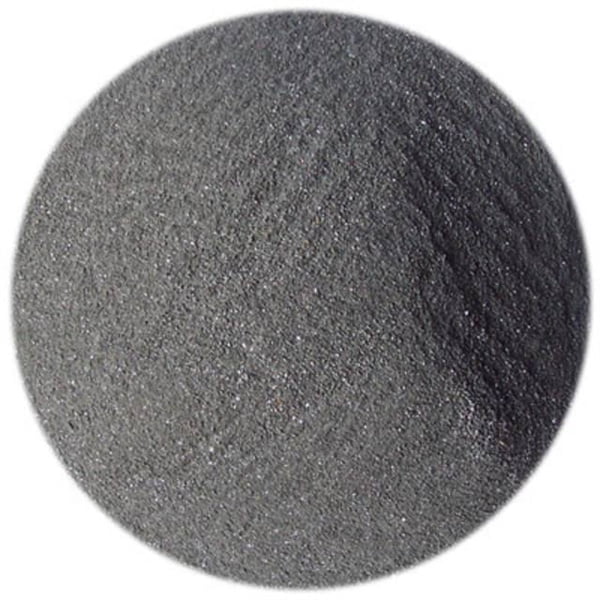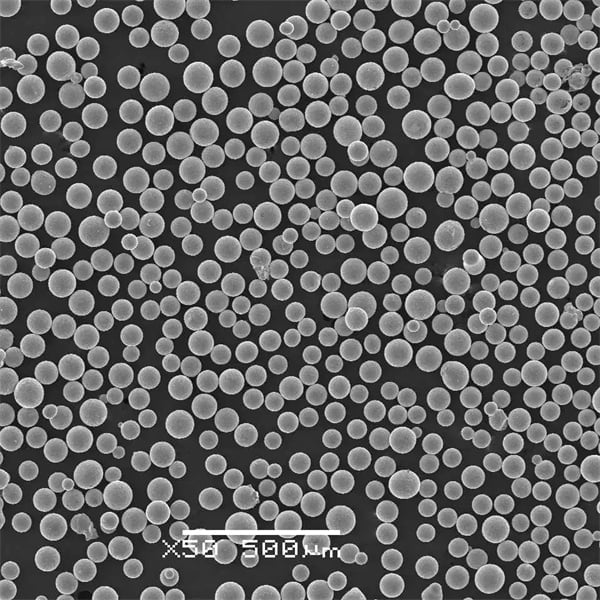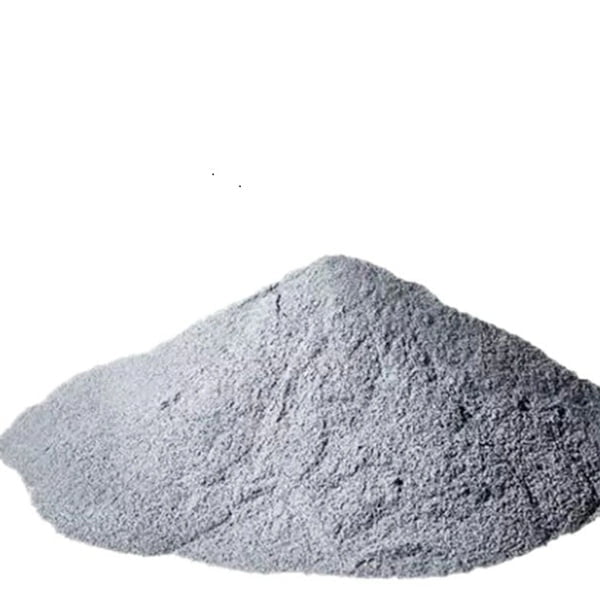Powder Laser 3D Printing for Medical Devices
Table of Contents
Powder laser 3D printing, encompassing technologies like Selective Laser Sintering (SLS) and Direct Metal Laser Sintering (DMLS), is rapidly transforming the medical device landscape. Offering unparalleled design freedom, complex geometries, and biocompatible materials, these printers are enabling:
1. Patient-Specific Customization:
1. Prosthetics and Implants of powder laser 3D printing
Prosthetics:
- Precisely Tailored: Unlike traditional prosthetics, 3D printing allows for customization based on individual anatomy. This means a better fit, improved comfort, and ultimately, enhanced function. Imagine an arm prosthetic that perfectly matches your bone structure and muscle movement, allowing for natural-feeling movement and increased dexterity.
- Lightweight and Durable: 3D printed prosthetics can be lighter than traditional counterparts, reducing fatigue and improving wearability. Additionally, advanced materials offer both strength and flexibility, leading to durable and long-lasting prosthetics.
- More Affordable: While initial costs may be comparable, the ability to create prosthetics on-demand can reduce long-term costs associated with adjustments and replacements. This makes prosthetics more accessible to a wider range of individuals.
- Enhanced Aesthetics: Forget the clunky, generic look. 3D printing allows for the incorporation of personalized designs, colors, and even patterns, making prosthetics more aesthetically pleasing and reflective of the wearer’s individuality.

Implants:
- Biocompatible Wonders: Custom-designed implants can be made from materials with optimal biocompatibility, reducing the risk of rejection and ensuring better integration with the body’s tissues. This is particularly important for implants like hip replacements and dental crowns, where long-term success relies on seamless integration.
- Improved Osseointegration: 3D printing allows for the creation of porous structures that mimic natural bone, promoting osseointegration, the process by which bone grows around and bonds with the implant. This leads to a stronger and more stable implant, reducing pain and improving functionality.
- Complex and Customized Designs: 3D printing enables the creation of complex and patient-specific implants for intricate procedures. Imagine a custom-designed bone scaffold perfectly matching a patient’s unique bone defect, promoting optimal healing and regeneration.
- Reduced Surgical Time and Risk: With precise pre-surgical planning and patient-matched implants, surgeons can perform minimally invasive procedures with shorter operating times and potentially lower risks. This translates to faster recovery and improved patient outcomes.
2. Surgical Guides and Models:
Imagine a surgeon meticulously planning a complex operation not just on 2D images, but on a tangible, 3D printed replica of the patient’s anatomy. This is the reality that 3D printing is bringing to the surgical field, revolutionizing the way procedures are performed and improving outcomes for patients.
Patient-Specific Precision:
- Pre-plan Every Move: Unlike flat X-rays or CT scans, 3D printed models provide a realistic and manipulable representation of the patient’s anatomy. Surgeons can visualize and practice the entire procedure beforehand, identifying potential challenges and optimizing their approach. This leads to increased accuracy and reduced risk of complications during surgery.
- Minimally Invasive Magic: With a detailed understanding of the patient’s anatomy, surgeons can opt for minimally invasive techniques, reducing tissue damage, scarring, and post-operative pain. This translates to faster recovery times and better patient experiences.
- Custom-Made Guides: 3D printed surgical guides act as templates during surgery, ensuring precise placement of implants, screws, or other surgical instruments. This minimizes errors and ensures optimal outcomes, especially in complex procedures like joint replacements or tumor removal.
Benefits Beyond the Operating Room:
- Improved Communication: 3D printed models can be used to explain complex medical conditions to patients in a clear and understandable way, fostering better communication and informed decision-making.
- Surgical Education: Medical students and residents can use 3D printed models to practice surgical techniques in a safe and realistic environment, improving their skills and preparedness for real-life scenarios.
- Research and Development: 3D printed models can be used to develop and test new surgical techniques and technologies, accelerating advancements in the field and ultimately improving patient care.
2. Advanced Functionality and Performance:
Porous and Lightweight Designs
3D printing is revolutionizing the field of implants, enabling the creation of porous and lightweight structures that were previously impossible to manufacture using traditional methods. These innovative implants offer a range of benefits, including:
Improved Bone Ingrowth:
- Mimicking Nature: 3D printing allows for the creation of porous structures that mimic the natural trabecular bone structure. This provides a conducive environment for bone cells to grow and infiltrate, promoting osseointegration, the process by which bone bonds with the implant.
- Enhanced Stability: The increased surface area of porous implants promotes stronger bone-to-implant bonding, leading to improved stability and reduced risk of implant loosening or failure.
- Faster Healing: The interconnected pores within the implant allow for nutrient and blood flow, facilitating bone growth and promoting faster healing times.
Reduced Weight and Improved Strength:
- Lightweight Wonders: 3D printed implants can be significantly lighter than traditional implants, reducing stress on the surrounding bone and tissue. This is especially beneficial for patients with osteoporosis or other conditions that weaken bone.
- Stronger Than Ever: Despite their lighter weight, 3D printed implants can be just as strong, or even stronger, than traditional implants. This is because 3D printing allows for the creation of optimized structures that are tailored to the specific needs of each patient.
Patient-Specific Customization:
- Perfect Fit: 3D printed implants can be custom-designed to match the exact size and shape of the patient’s anatomy. This ensures a perfect fit and optimal load distribution, reducing the risk of complications and improving long-term success.
- Complex Geometries: 3D printing allows for the creation of implants with complex geometries that would be impossible to manufacture using traditional methods. This enables the treatment of complex cases that were previously unaddressable.
Biocompatible Materials
A wide range of biocompatible materials, like titanium, cobalt chrome, and bioresorbable polymers, can be used to create devices that integrate seamlessly with the human body.
Materials that Matter:
- Titanium: A strong, lightweight, and corrosion-resistant metal that is highly biocompatible, making it ideal for implants that need to withstand high loads, such as hip replacements and dental implants.
- Cobalt Chrome: Another strong and corrosion-resistant metal that is often used for implants that need to be strong and durable, such as knee replacements and spinal implants.
- Bioresorbable Polymers: These materials are designed to be absorbed by the body over time, making them ideal for temporary implants or for use in applications where long-term durability is not required.
Benefits of Biocompatible Materials:
- Reduced Risk of Rejection: Biocompatible materials are designed to be accepted by the body, reducing the risk of rejection and complications.
- Improved Osseointegration: Biocompatible materials can promote bone growth and integration with the implant, leading to improved stability and long-term success.
- Reduced Pain and Inflammation: Biocompatible materials are less likely to cause pain and inflammation than traditional implant materials, leading to a more comfortable experience for patients.
- Versatile Applications: Biocompatible materials can be used to create a wide range of implants and devices, from simple screws and plates to complex custom-made implants.
Integrated Electronics and Sensors
3D printing opens doors to embedding sensors and electronics directly into devices, enabling real-time monitoring and personalized treatments.
Seamless Integration:
- Directly Embedded: 3D printing allows for the precise embedding of sensors and electronics within the device structure, eliminating the need for bulky external components. This leads to more compact, comfortable, and aesthetically pleasing devices.
- Optimized Functionality: The integration of electronics and sensors can be tailored to the specific needs of each patient, ensuring optimal functionality and performance.
- Versatile Applications: This technology can be used in a wide range of medical devices, including pacemakers, insulin pumps, drug delivery systems, and even artificial organs.
Real-Time Monitoring:
- Vital Health Data: Integrated sensors can collect real-time data on various health parameters, such as heart rate, blood pressure, blood glucose levels, and tissue oxygenation.
- Early Warning System: This data can be used to identify potential health issues early on, allowing for timely intervention and preventive measures.
- Personalized Care: Real-time monitoring enables healthcare providers to tailor treatment plans to the individual needs of each patient, optimizing outcomes and improving quality of life.
Personalized Treatments:
- Responsive Devices: 3D printed devices with integrated electronics and sensors can be programmed to respond to specific conditions or changes in the patient’s health.
- Automatic Adjustments: For example, an insulin pump can automatically adjust the amount of insulin delivered based on the patient’s blood glucose levels.
- Improved Outcomes: Personalized treatments can lead to better control of chronic conditions, reduce the risk of complications, and improve overall health and well-being.

3. Improved Efficiency and Accessibility:
Reduced Manufacturing Lead Times
3D printing eliminates the need for complex tooling, leading to faster production times and quicker patient access to customized devices.
Traditional Manufacturing Challenges:
Traditional manufacturing of medical devices involves complex and time-consuming processes such as mold design, fabrication, and testing. This can lead to long lead times, high costs, and limited customization options.
3D Printing Advantages:
3D printing eliminates the need for complex tooling, streamlining the manufacturing process and significantly reducing lead times. This allows for:
- Faster Production: 3D printing can produce devices in a matter of hours or days, compared to weeks or months with traditional manufacturing.
- Reduced Costs: 3D printing can reduce manufacturing costs by eliminating the need for expensive molds and tooling.
- Customization: 3D printing allows for the creation of customized devices that are tailored to the specific needs of each patient.
Benefits for Patients:
- Quicker Access to Care: 3D printing can reduce the time it takes for patients to receive customized devices, improving their quality of life and reducing the burden on healthcare systems.
- Improved Outcomes: Customized devices can provide better fit, function, and comfort, leading to improved patient outcomes.
- Empowered Patients: 3D printing allows patients to be more involved in the design and development of their devices, giving them greater control over their care.

On-Demand Manufacturing
3D printers can be installed in hospitals or clinics, allowing for localized production of devices, reducing costs and logistical challenges.
The Promise of On-Demand Manufacturing:
3D printing has the potential to revolutionize the way medical devices are manufactured and distributed by enabling on-demand production at the point of care. This means that hospitals and clinics can have their own 3D printers to produce devices as needed, eliminating the need for centralized manufacturing and distribution facilities.
Benefits of On-Demand Manufacturing:
- Reduced Costs: On-demand manufacturing can reduce costs by eliminating the need for expensive inventory and shipping.
- Faster Delivery: Devices can be produced on-demand, eliminating wait times for patients.
- Increased Customization: 3D printing allows for the creation of customized devices that are tailored to the specific needs of each patient.
- Improved Sustainability: On-demand manufacturing can reduce waste by producing devices only when they are needed.
Challenges to Overcome:
- Initial Investment: The initial investment in 3D printers and training can be high.
- Regulatory Compliance: 3D printed devices must meet the same regulatory standards as traditionally manufactured devices.
- Quality Control: Ensuring the quality of 3D printed devices is essential for patient safety.
Increased Innovation and Experimentation
The ease and affordability of 3D printing fosters rapid prototyping and innovation, leading to development of new and improved medical devices.
The Innovation Engine:
3D printing is revolutionizing the medical device industry by making it easier and more affordable to create prototypes and experiment with new ideas. This has led to an explosion of innovation in the field, with new and improved devices being developed all the time.
Benefits of 3D Printing for Innovation:
- Rapid Prototyping: 3D printing allows designers to quickly and easily create physical prototypes of their designs, enabling them to test and refine their ideas before investing in expensive tooling and manufacturing.
- Cost-Effective Experimentation: 3D printing is a relatively inexpensive way to experiment with new materials, designs, and manufacturing techniques. This allows companies to explore new possibilities without the risk of high financial investment.
- Increased Collaboration: 3D printing makes it easy to share designs and prototypes with others, facilitating collaboration between designers, engineers, and clinicians.
Examples of 3D Printing-Driven Innovation:
- Custom implants: 3D printing is being used to create custom implants that are tailored to the specific needs of each patient. This can lead to better fit, improved function, and greater comfort for patients.
- Bio-printed tissues: 3D printing is being used to create bio-printed tissues that can be used for transplantation or research. This has the potential to revolutionize the way we treat injuries and diseases.
- Wearable devices: 3D printing is being used to create wearable devices that can monitor patient health and deliver personalized treatments. This has the potential to improve patient outcomes and reduce the cost of healthcare.
Share On
MET3DP Technology Co., LTD is a leading provider of additive manufacturing solutions headquartered in Qingdao, China. Our company specializes in 3D printing equipment and high-performance metal powders for industrial applications.
Inquiry to get best price and customized Solution for your business!
Related Articles
About Met3DP
Recent Update
Our Product
CONTACT US
Any questions? Send us message now! We’ll serve your request with a whole team after receiving your message.

Metal Powders for 3D Printing and Additive Manufacturing
COMPANY
PRODUCT
cONTACT INFO
- Qingdao City, Shandong, China
- [email protected]
- [email protected]
- +86 19116340731

















